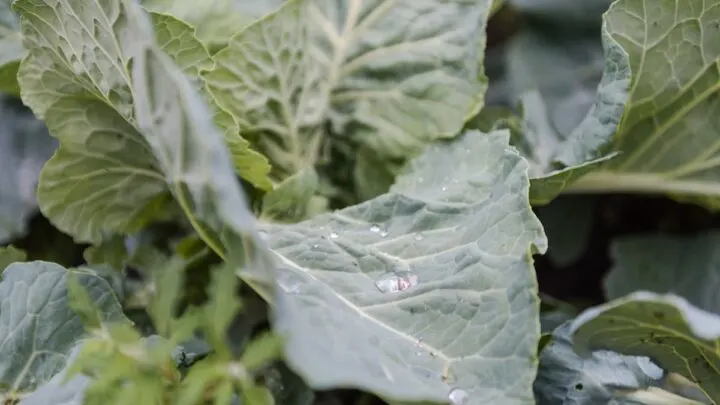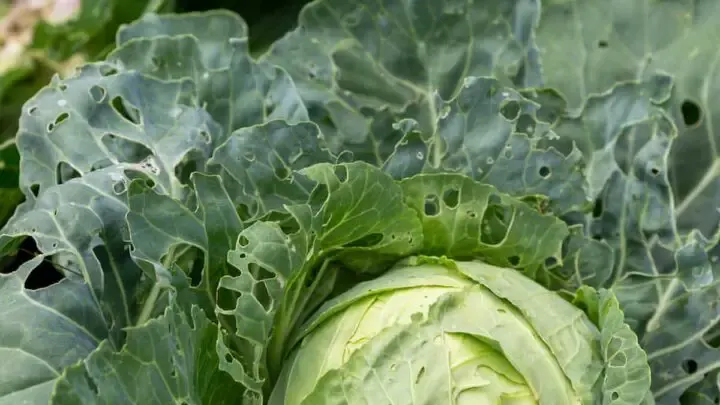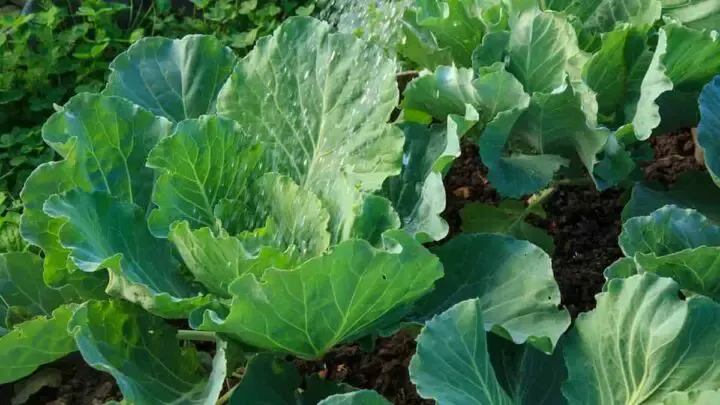Growing cabbage can be a ton of fun, no matter how much gardening experience you have. Considering it’s a leafy plant, there are tons of things that can happen to it. Wilting, for example, is commonly seen in cabbage plants and can be cause for concern. So let’s get to it; why might cabbage plants start wilting?
Cabbage plants wilt when there are poor watering conditions; this includes underwatering and overwatering. Improper soil drainage and Fusarium wilt infections can also cause wilting and discoloration in cabbage plants.
Although seeing your cabbage wilt (especially if it’s gotten to a considerable size) can be disheartening, it’s not the worst. You can likely reverse the problem in a few short steps.
I’ve done some research and have come up with some awesome ways to help you identify why cabbages might wilt, as well as some super help prevention methods so you can garden without care. Let’s get into it!

Reasons Cabbage Plants Wilt
When cabbages wilt, it’s never fun. It’s downright annoying, especially when you think you’re doing everything right. But, there is a reason for everything in gardening, so let’s get into what may cause cabbages to wilt.
Underwatering/Overwatering
Often cabbages will wilt when they are not properly watered. This doesn’t just include underwatering but overwatering as well.
The typical cabbage plant needs 1 to 1.5 inches of water weekly. However, how much water your cabbage plant needs depends greatly on your gardening zone and the size of the plant. Below is a helpful table comparing planting zones and the size of your cabbage:
| Cabbage Size | Amount Of Water Required |
|---|---|
| 1 to 2 ft | 1 to 1.5 inches |
| 2 – 3 ft | 1.5 to 2 inches |
| 3 – 4 ft | 2 to 2.5 inches |
| 4 – 5 ft | 2.5 – 3 inches |
In my experience, growing cabbages in containers is a bit tricky with watering schedules. Although the cabbage turns out to smaller

Poor Soil Drainage
Poor soil drainage and choice of soil can also lead to cabbage plants wilting.
While you might think that a large container is the best choice for a plant to flourish, it can lead to improper soil drainage.
Water can settle to the bottom of a pot that is too large for your plant and completely miss the plant itself. Your plant will not act as if it’s been watered.
If you continue adding water to a pot, you can risk drowning your cabbage plant.
Check out the kind of soil you are using too. Here are some characteristics of the perfect soil for your cabbage:
- Well draining
- Able to retain some moisture
- Has a pH of around 6.5, which is only slightly acidic
Fusarium Infection
Fusarium infection can lead to your cabbage wilting and discoloring.
The lower leaves will become limp and yellow when the cabbage has a fusarium infection. While the cabbage is not technically wilted, the leaves are no longer firm enough to keep their shape.
As the disease progresses, the leaves will begin to fall off, thus ruining the cabbage.
Cabbage farmers can combat this disease by rotating crops each season or planting crops in cooler temperatures in spring and winter.

Poor Fertilization
Poor fertilization can affect the outcome of your cabbages. The ratio of nitrogen, phosphorus, and potassium is essential.
The following ratios are how you can get the best growth for your cabbage.
| Fertilizer Ratio | Growth Outcome |
| Equal parts nitrogen, phosphorus, and potassium | Robust growth of your heads of cabbage |
| More nitrogen than phosphorus or potassium | More growth of leaves, not head |
| More phosphorus than nitrogen or potassium | Leaves will become discolored from too much phosphorus |
| More potassium than nitrogen or phosphorus | Growth of cabbage is overall stunted |
Weather Conditions
Like all crops, inadequate weather conditions – sunlight and temperature especially – can cause your cabbage to wilt.
The first thing to note about cabbage is that it is a cool weather plant, so direct sunlight and high temperatures can be detrimental to your cabbage plant.
Both direct sunlight and high temperatures can cause wilting in your cabbage, particularly when temperatures exceed 80 degrees. Both weather conditions can cause your cabbage and the soil it is planted in to dry out faster than you might expect.
Ways To Prevent Cabbage From Wilting
Not all cabbage is bound to wilt. If you are an attentive gardener, you can prevent your cabbage from wilting. Keep these in mind, and you will have plump, healthy cabbage to enjoy.

Adjust Your Watering Schedule
One of the easiest ways to help your cabbage stay healthy is to adjust your watering schedule.
You may not be sure if you are giving your cabbage too much or too little water, but regardless of the situation, you can try watering your cabbage deeply.
Watering deep is easy.
If you are watering outside, all you need to do is water your cabbage for a longer time with a slower stream of water. Turn your hose on low pressure and water your cabbage for a few hours.
You may feel like you are drowning your crops; rather, you allow the water to soak deep into the soil.
Provide Plenty Of Shade For Your Cabbage Plant
Cabbage likes at least 6 hours of sunlight, but too much sunlight may not be good for your cabbage.
You can provide shade to your cabbage in a few ways:
- Plant a nasturtium companion plant that will provide your cabbage with some shade but does not fully cover the plant
- Plant your cabbage near an overhang that blocks sunlight for part of the day
- Move your cabbage onto a porch or into a shaded area if it is in a pot
Plant At An Ideal Time In The Season
Cabbage plants need to be planted in cold weather to be sweet.
Cabbage plants can become hardy against the cold if you plant your cabbage 6-8 weeks before the first frost. For many places, this is in October or November.
Since your cabbage was planted and grew during a frost, it will be able to tolerate the cold, so you do not need to worry that your plant is going to die in the cold.

Choose A Proper Fertilizer
Fertilizers can make a difference in how your cabbage grows. You should not feed your cabbages the wrong fertilizer or forgo fertilizing your cabbage plants.
As previously noted, the best fertilizer to use for cabbage plants is one with equal parts of nitrogen, phosphorus, and potassium to promote healthy growth.
For the best results, feed your cabbages every three to four weeks until the heads of the cabbage begin to form.
Wait until the heads of cabbage begin to officially form before feeding your plants again. The next burst of nutrients from the fertilizer will help your cabbage plants finish strong and produce beautiful heads of cabbage.
Use Well Draining Soil
Well-draining soil will be your best friend if you want healthy cabbage heads.
Soil can depend on the site where you are planting, but other factors can differentiate between well-draining soil and soil that does not drain well.
Check out this chart
| Well Draining Soil | Non Well Draining Soil |
| Garden with a gentle slope | Flat gardens with no slope |
| Deep soil | Soil high in clay |
| Loamy soil which has a good combination of silt, clay, and sand | Rocky soil |
Check out this chart:
Mulch The Soil
Mulch can help your plant stay cool and moist.
Cabbages are cool weather plants, so mulch could be your best friend if you grow cabbage. Mulch will:
- Help your soil retain moisture
- Keep your plant’s roots cooler
- Keep the soil around your cabbage cooler
Mulch is a relatively easy step to ensure that your cabbage will be healthy and less prone to wilting.
Plant In A Lighter Colored Container
Light-colored containers can keep your cabbage cooler too.
You may have chosen to plant your cabbage in a container, and if that is the case, then you should choose a light-colored container, not a black or gray one.
A lighter-colored container will not absorb as much sunlight, so the soil will not be as hot. The soil will not dry out as fast, either.
Think of a dark-colored container like someone wearing a black shirt in the summer. It feels like the shirt absorbs all of the direct sunlight and heat; your dark pot would be doing the same thing to your cabbage, which is like being moist and cool.

Hi there, my name is Allie and welcome to my blog; GareningWithAllie!
Much of what you see written here is just our personal experiences with gardening. Along with the content I write here, there is also a unique collection of gardening topics covered by some of our close friends. I hope you find everything you read here to be helpful, informative, and something that can make your gardening journey the most lovely experience ever! With that said, Happy Gardening!
